SEARCH
SIGN UP FOR UPDATES
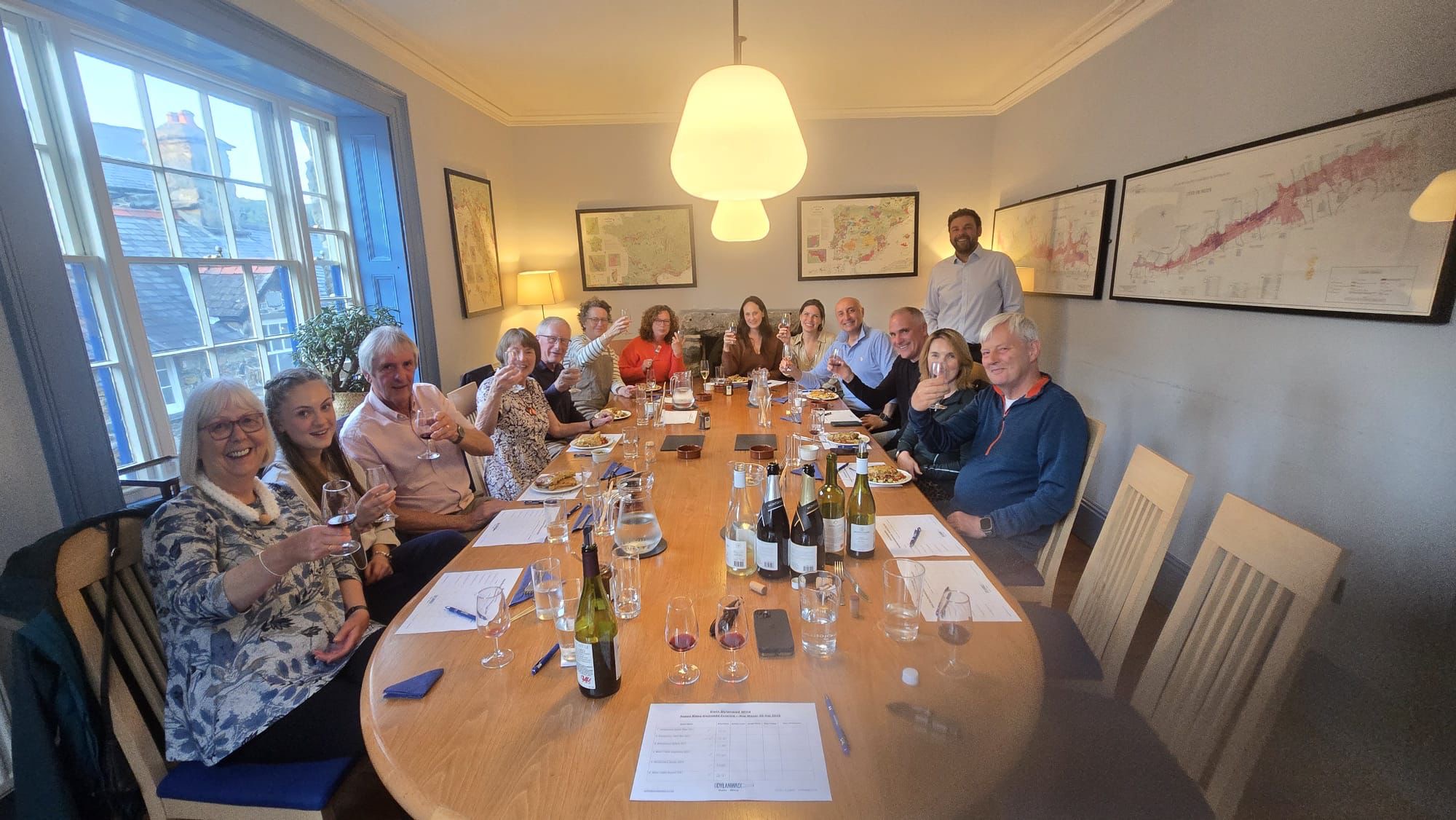
Celebrating Welsh Wine Week: A Toast to a Thriving Industry
Welsh Wine Week
As Welsh Wine Week unfolds, there’s no better time to celebrate the remarkable rise of Welsh wine over the past decade. Wales is now producing award-winning wines that hold their own against better-known regions. From crisp, mineral whites to delicate rosés and elegant reds, Welsh vineyards are embracing the terroir of their hillsides and crafting wines full of character and quality.
Whitecastle’s New Winery
It’s a bit of a trek on a Sunday from Dolgellau to Whitecastle in Llanfetherine but Dylan wouldn’t have wanted to have missed the official opening of Robb and Nicola’s Gwindy for the world. We’ve been selling their wines and tracking their progress with great interest for a decade. Now, they have taken the huge next step of building their own winery! A massive stride and investment.
Oz Clarke
Oz Clarke, one of the doyans of the UK wine industry gave an entertaining and dramatic opening speech that would have been worth the trip on its own! The building is immaculate with all the shiny new equipment you’d expect. More importantly, tanks and barrels filled with their first ferments made on site were made available to sample. We can’t wait to have them on our shelves in Gwin Dylanwad. Bravo Robb and Nicola. Here’s to many more vintages of Monmouthshire’s finest!
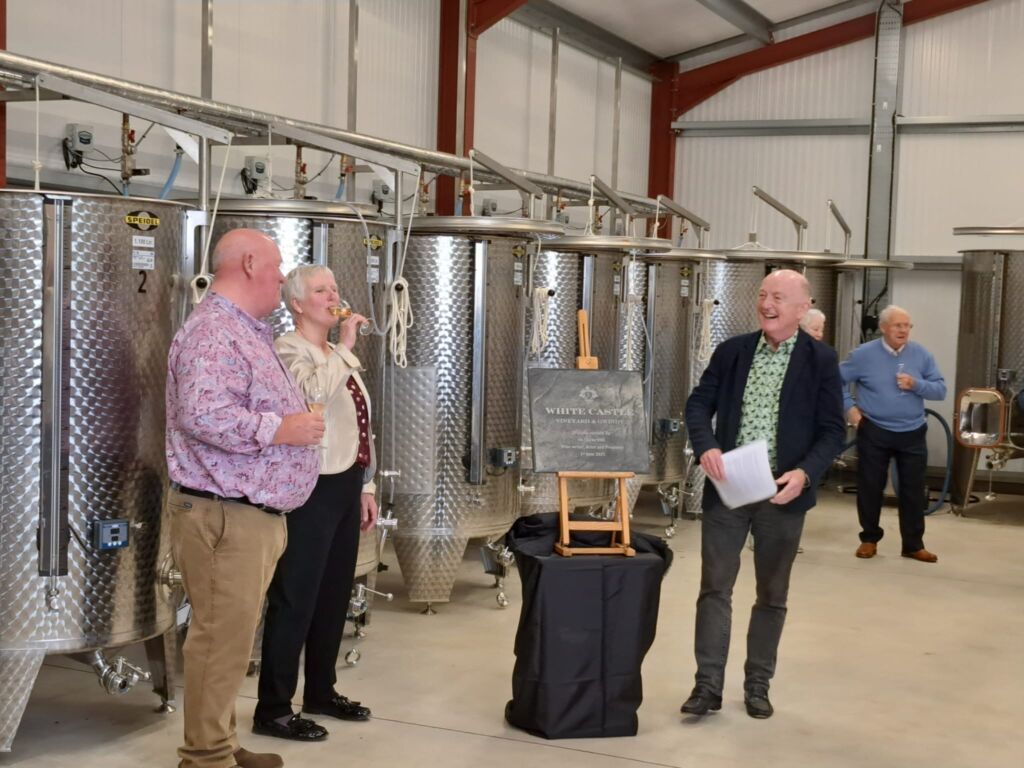
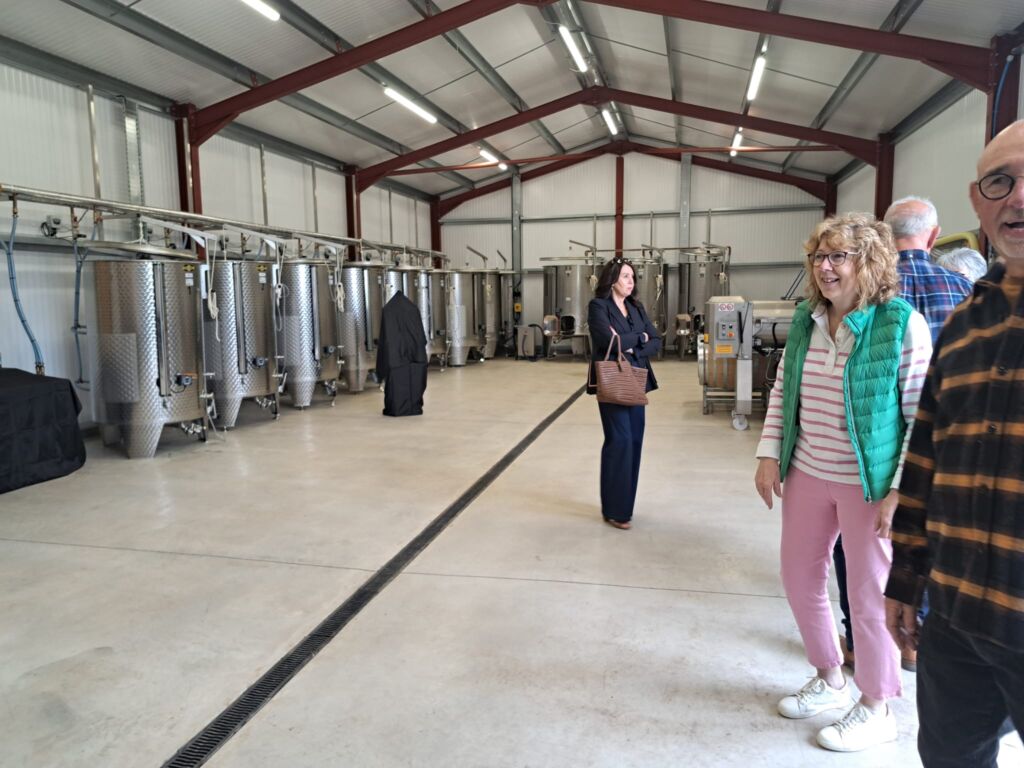
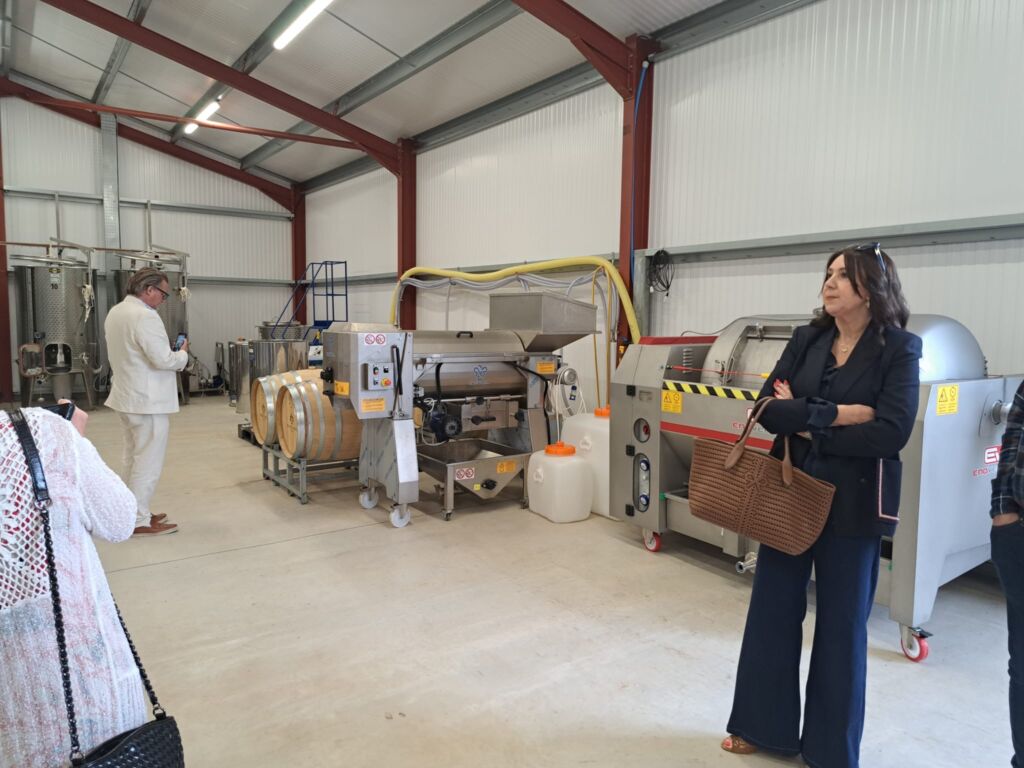
Montgomery Vineyard
Back at the shop, we were thrilled to welcome Woody from Montgomery Vineyard for a special tasting on Friday night. He guided us through a hand-picked selection of his wines as well as a wine from Gwinllan Y Dyffryn and Whitecastle. To top it off, Dylan whipped up his famous Welsh rarebit to end the tasting.

A New Natural Wine
On Saturday, Osian visited Tair Gafr Wine (yes, our team really do live and breathe wine!). This beautiful 3-acre vineyard near Cowbridge produces natural Welsh wines while preserving the biodiversity in and around the land. It has gained organic status and practises minimum intervention including many biodynamic methods. With 3,000 south-facing vines you can also enjoy the company of alpacas as well as the goats Potter, Oz and Merlin who roam freely among the vines.
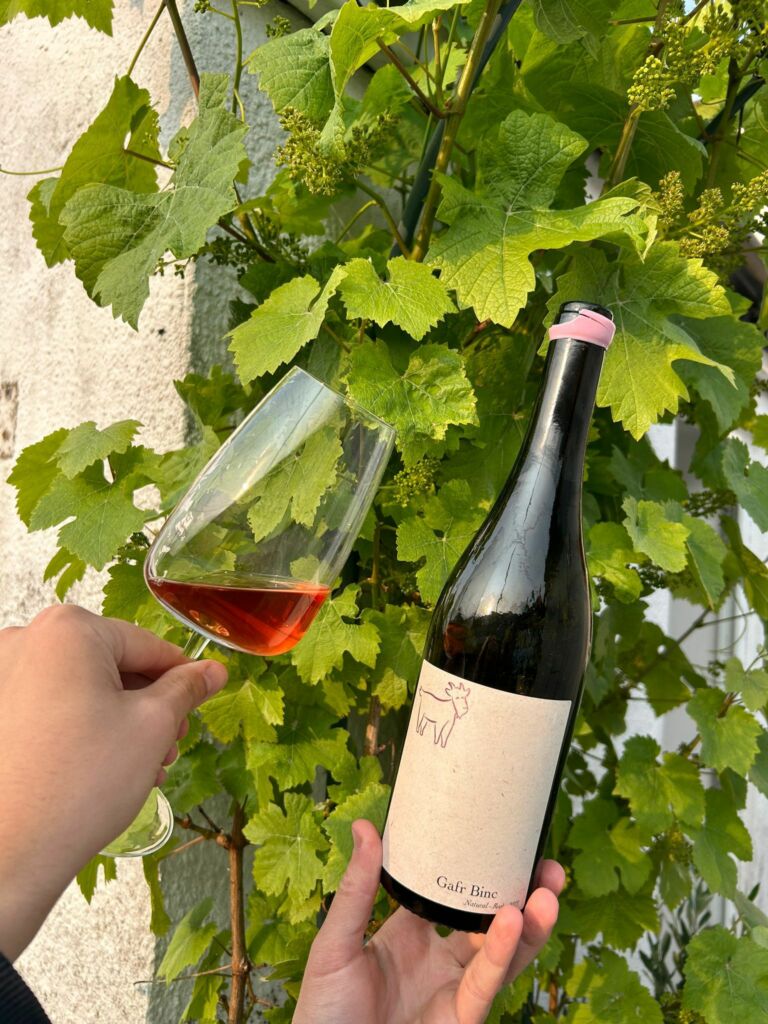
Committed to Sustainability
The name “Tair Gafr” refers to a Welsh folk song about goats of different colours, much like the vibrant range of wines produced here. Guinea fowls wander through the rows of vines providing natural pest control by eating insects. Osian and his friends were shown the Regent and Orion grapevines, learning about the vineyard’s commitment to polyculture and soil health.
The Wines
They tasted three natural wines: Oes Gafr Eto – light, floral, with tart cherries; Gafr Binc – notes of rhubarb and custard, complex and great texture; and Gafr Goch – fruity, with hints of black pepper and cherries, smooth and beautifully balanced.
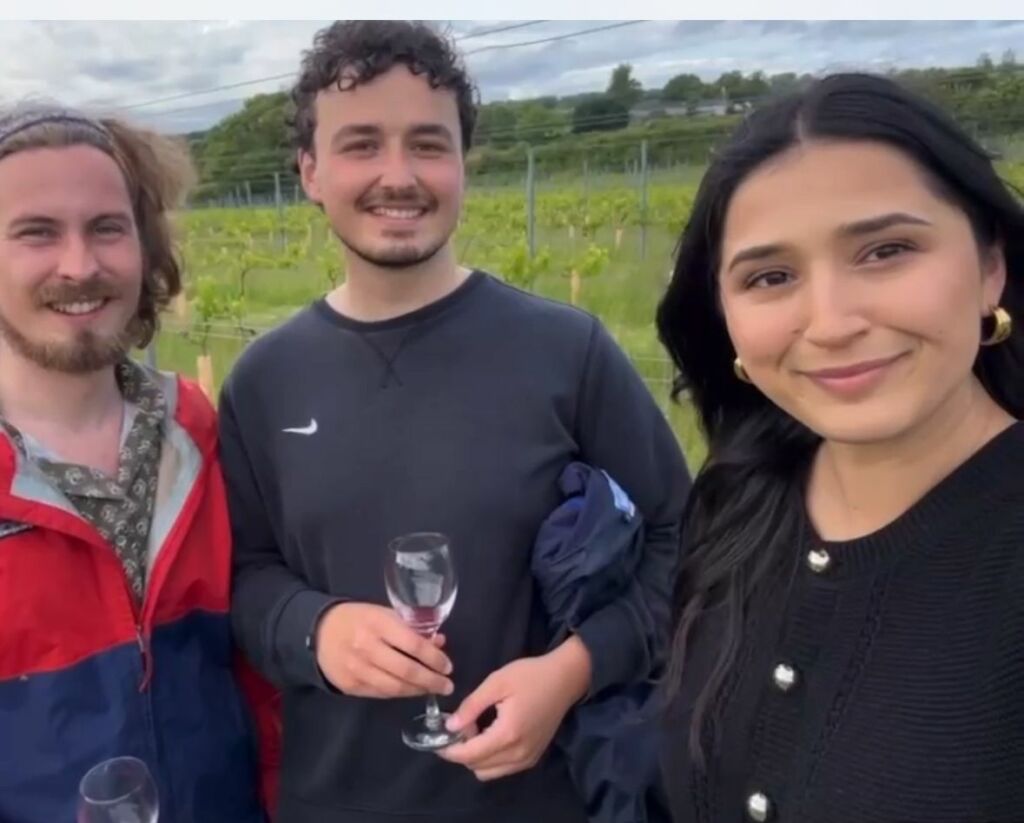
The challenge of Welsh wine making
Of course, making wine in Wales comes with real challenges. The climate, while improving in conditions for wine making, is still unpredictable, and last year was particularly harsh for many vineyards. Poor weather during the growing season led to very low yields, with some producers harvesting just a fraction of what they had hoped for.
Taster Slate
So whether you’re popping open a bottle of Whitecastle’s Pinot Noir Précoce or sipping a sparkling from Montgomery, this week is all about supporting and celebrating the creativity and resilience of Welsh winemakers. Have a look at our website for Welsh Wines. Also, all week in Dylanwad we have a taster slate of 3 Welsh Wines with 3 snacks. So come and enjoy. Iechyd da!
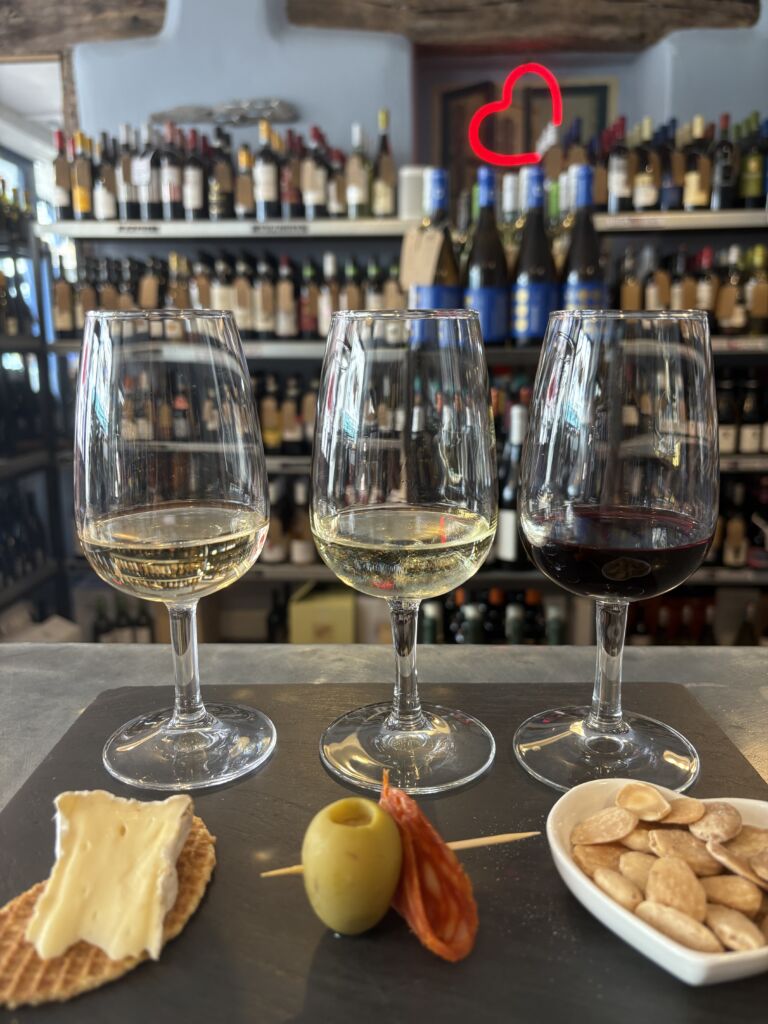
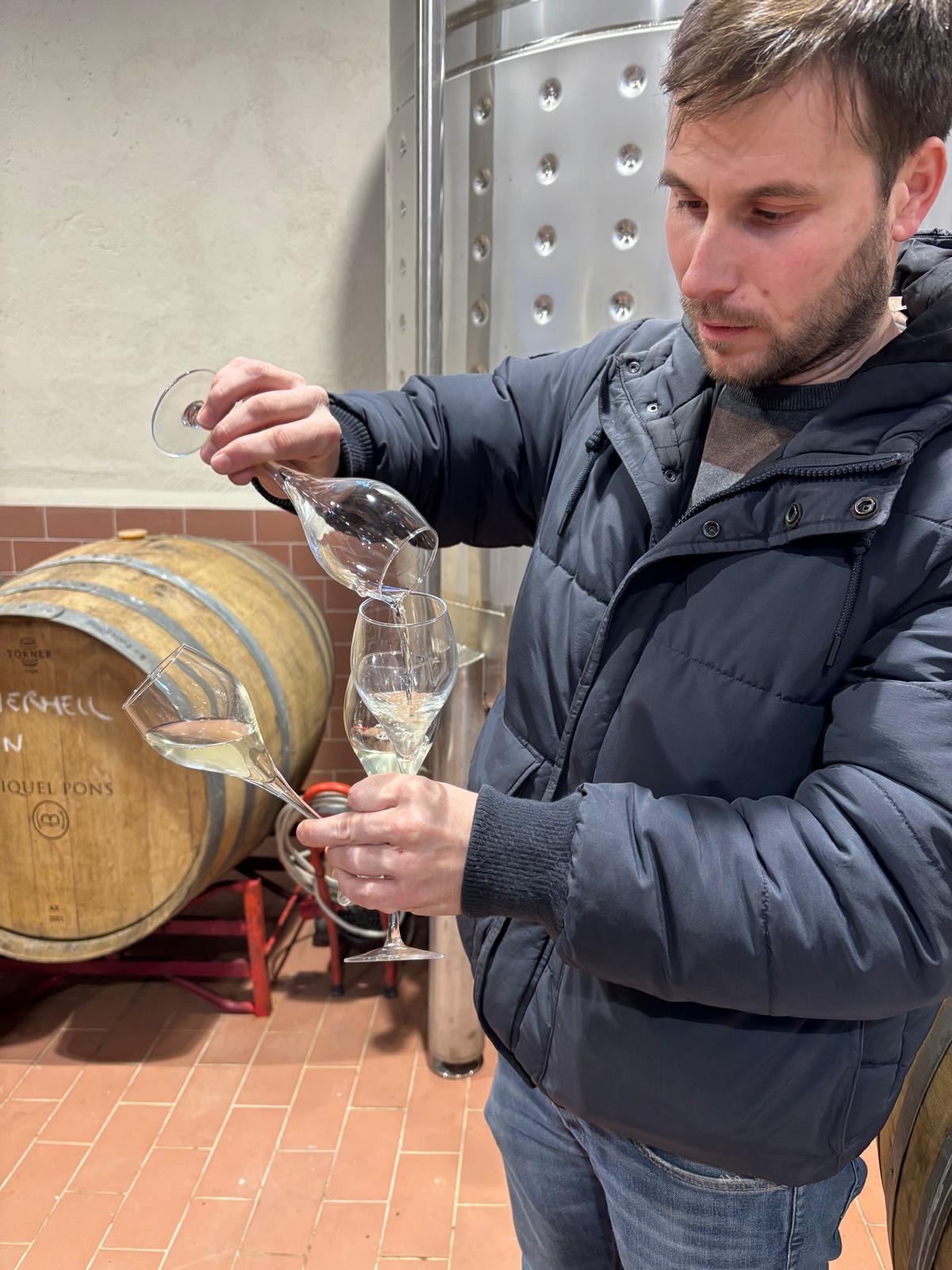
Discovering the Craft of Miquel Pons Cava
Miquel Pons Penedès
Visiting Miquel Pons Cava was a fascinating experience. It revealed the knowledge and precision behind every bottle of this renowned Spanish sparkling wine. Nestled in the heart of Catalonia’s Penedès region, Miquel Pons is a family-run organic winery. They are dedicated to preserving traditional Cava-making methods, while embracing modern techniques to ensure the highest quality. Cava is made using the same method as Champagne and offers exceptional value from Miquel Pons.

Meticulous Production
One of the highlights of our visit was learning about the meticulous production process. Miquel explained how the winery carefully selects the finest grapes from specific plots around their estate. The traditional varieties of Macabeo, Xarel·lo, and Parellada create a perfectly balanced Cava. The second fermentation takes place in bottle. Then the wines have extended ageing on the lees which is crucial in creating these exceptional wines.
Disgorgement Demonstration
A particularly exciting moment was witnessing the disgorgement process first-hand. This technique involves removing the sediment from the neck of the bottle and ensures clarity and purity in the final product. Normally, this is done through freezing the neck of the bottle. However, they believe a finer wine is produced without this thermal shock. Miquel expertly demonstrated this process, sending a neat spray of Cava over Llin who was trying to film him!

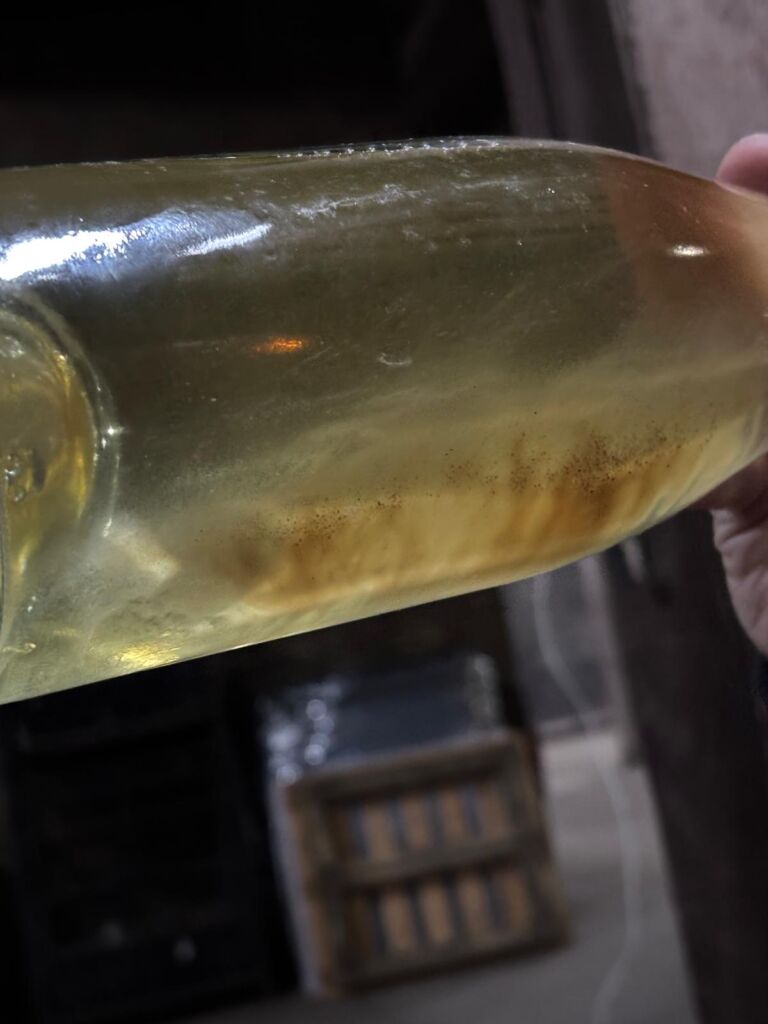
The Best Quality Cava
Of course, no visit to Miquel Pons would be complete without tasting their exceptional Cavas. We sampled a range, from Reserva to the more complex and aged Gran Reserva. You always learn something new and I have never seen a traditional sparkling wine where they use a cork for the bottle fermentation (as opposed to a crown top). This is what they do for their very top wine and clearly it makes a difference.

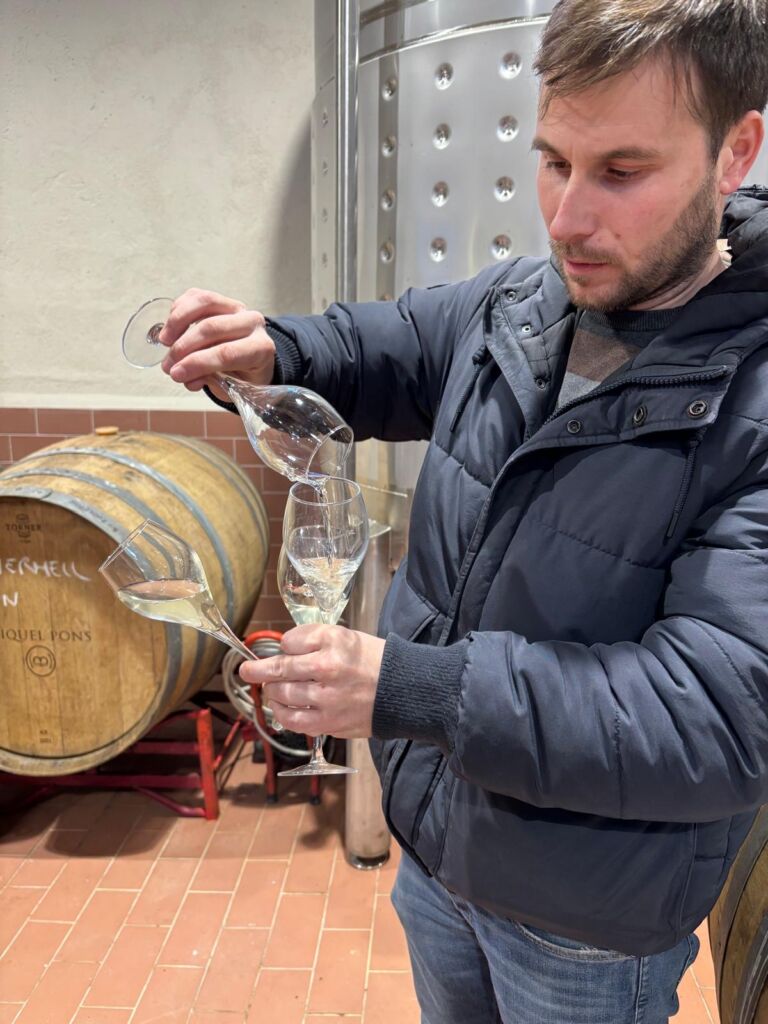
Tim Atkin
Miquel Pons Cava has received high praise: 95 points in Decanter Magazine. Recently they have attracted the attention of esteemed wine critic Tim Atkin, who has featured them in his choice of top Cava. If you are curious about Cava, or a big fan of sparkling wine, we highly recommend you pop in to try them. Make it quick, we are the only UK importer with limited stock for now!
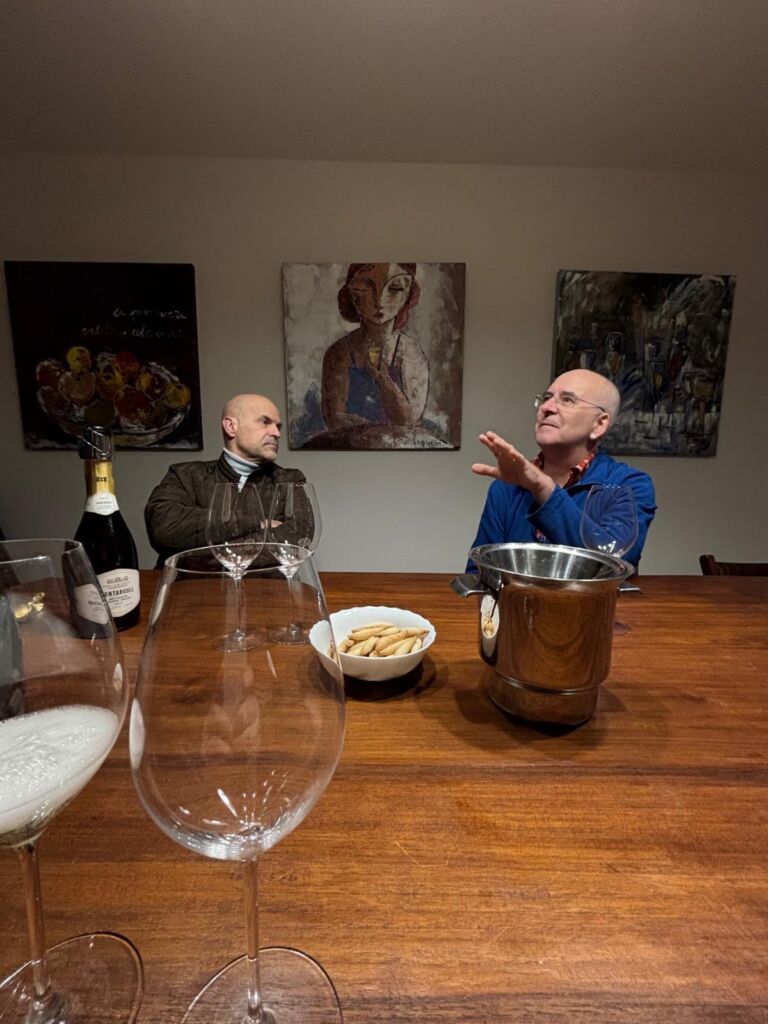
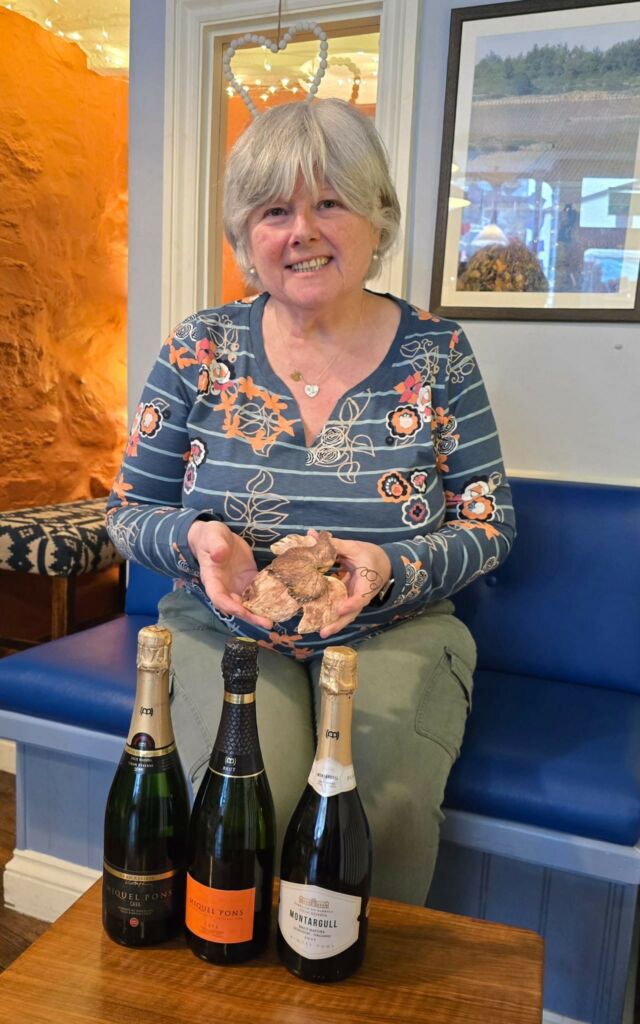
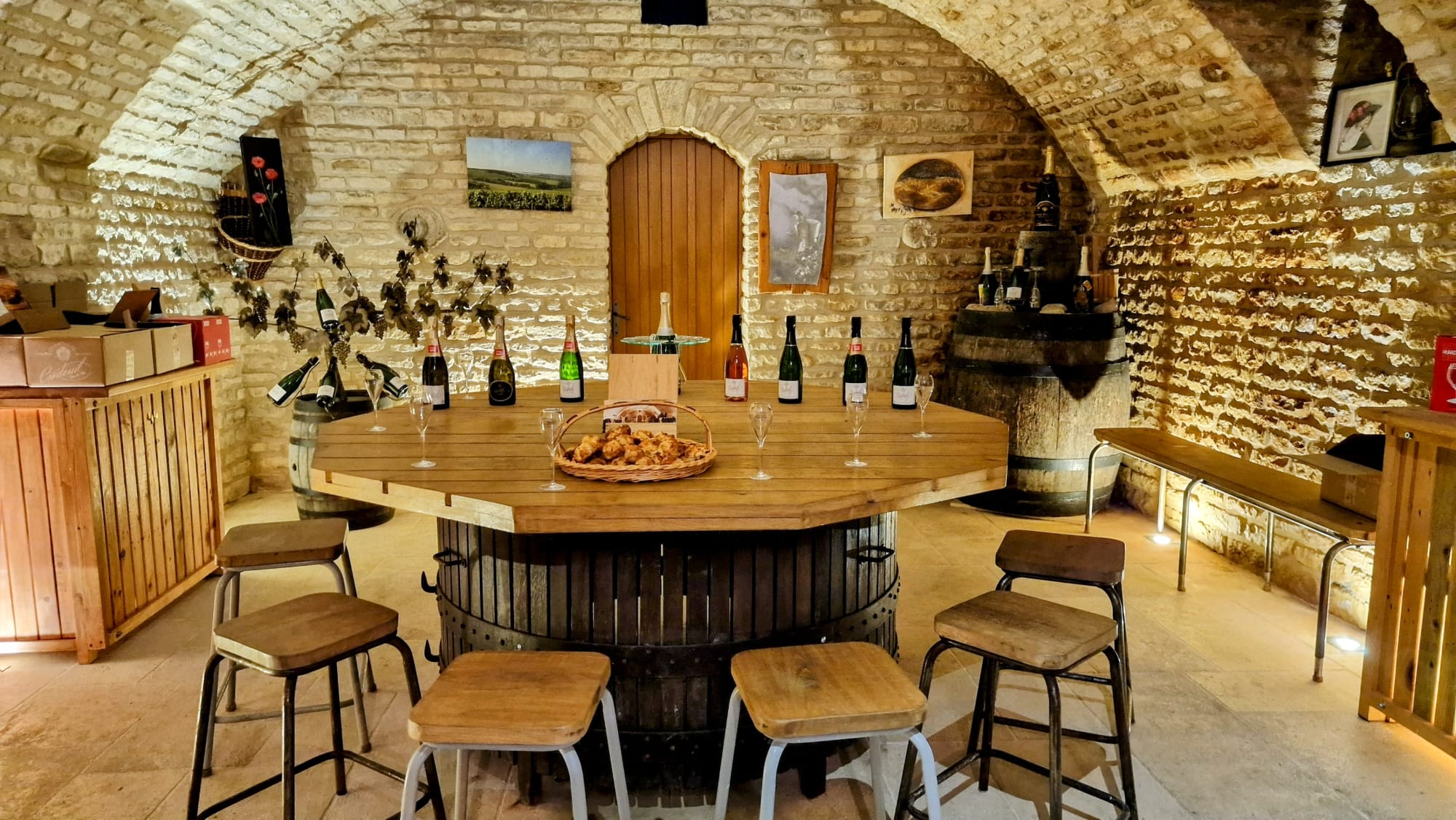
Champagne Cordeuil Père et Fille
We’ve just launched our new Champagne Cordeuil Père et Fille on our shop shelves. It occurred to me that we never wrote about our trip to the Loire at the beginning of the year! This is a mistake! I had no intention of keeping you all in the dark from our tales I promise!
Champagne Cordeuil Père et Fille – a New Import
We are proud of our new Champagne – it is the latest gift from our travels! It was the last stop of our trip but it was by no means the least.
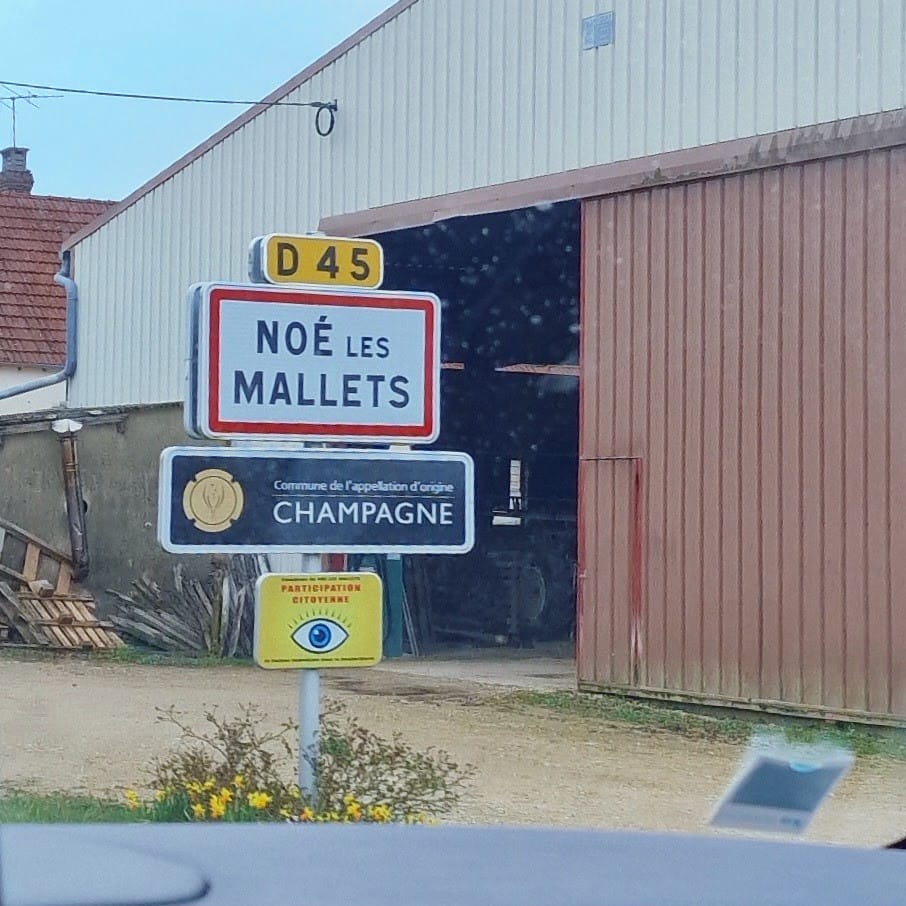
We had already been to Sancerre and Chablis so on the last day we bundled in the mini traveller to head to the airport. We had one stop to go – Chateau Cordeuil Père & Fille. Nothing got us out of bed quicker than a morning of Champagne tasting which was very apt for Llinos’ birthday too.
Father & Daughter Duo
Erlande welcomed us on our arrival. She is the daughter of Gilbert in the ‘father & daughter’ duo. Dyl and Llinos had already been last year so they were like old friends! The vineyard is based in Cote des Bar and has a long family history that began in 1950. Erlande is 3rd generation managing this vineyard in this lesser know region. Lesser known maybe, but no skimping on quality and we think this is great value Champagne.
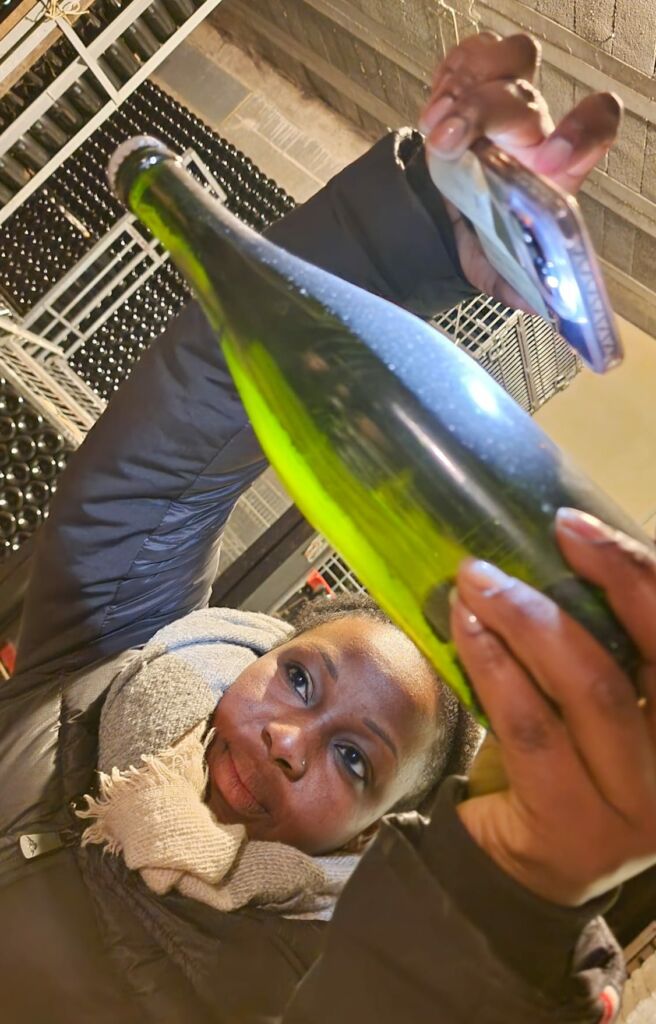
We had a quick tour around the winery and we were able to see the many Champagne bottles ageing. I was interested to see the bottles in the ‘gyro palate’ waiting to be disgorged. This automatically turns the bottles to slowly get the sediment to the neck of the bottle. An interesting and convenient machine that means Erlande doesn’t have to do it all by hand these days!
Champagne Tasting & a Tower of Gougère
We made our way to the cellar and this was a sight to be seen. There was an amazing room with a huge round table was decked with tasting glasses ready for our Champagne tasting. A tower of gougères that her father had made for us caught my eye immediately!
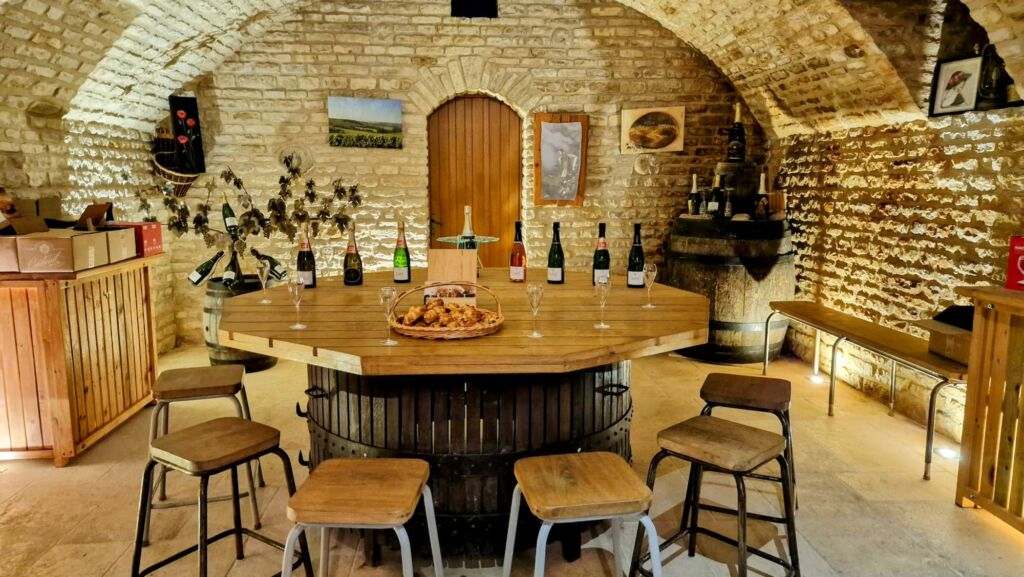
Erlande talked us through the different Champagne. They age Champagne Cordeuil aged for a minimum of 7 years on the lees. This is what gives it depth and character with that lovely brioche flavour.
My personal favourite was our new import Champagne, the brut Nature. Made using majority of Pinot Noir at 85% and 15% Chardonnay, it is soft, fruity and elegant. The high percentage of Pinot Noir adds plenty of fruit with balancing acidity, a long finish with a gentle mousse. A must try!
Terri

Hungarian Wine Summit
‘Oh Lucky Man!’
There are times in my life when I wonder what I have done to deserve something. Here in a good way I am now in the Hungarian Wine Summit! 20 years after my first wine trip to Hungary, courtesy of the kindness of Hugh Johnson. He arranged a visit to the recently created Royal Tokai Company. They were putting the historic wine back on the vinous map post-communism.
This time I am the lucky recipient of a “golden ticket” to the Hungarian Wine Summit. Hopefully it will become an annual event to educate and entertain wine professionals from around the world. The lovely Monika Gyenes of Best of Hungary website put my name forward as a Welsh representative. Hungary is not a big producer in global terms, around 14th in the world rankings and 1% of world production. Its 400m bottles a year probably equates to less than half of the production of E & J Gallo!
Landing on a flight from Birmingham to Budapest I am whisked from the airport. I’m dropped outside the Marriott Hotel in Pest. It looks across the Danube at Castle Hill on the Buda side of the river. I have time to stroll down the river to the indoor market. Then crossing the mighty Danube (still with a thousand miles to flow before it enters the Black Sea in Romania) and sauntering back to check-in at the river-side hotel.
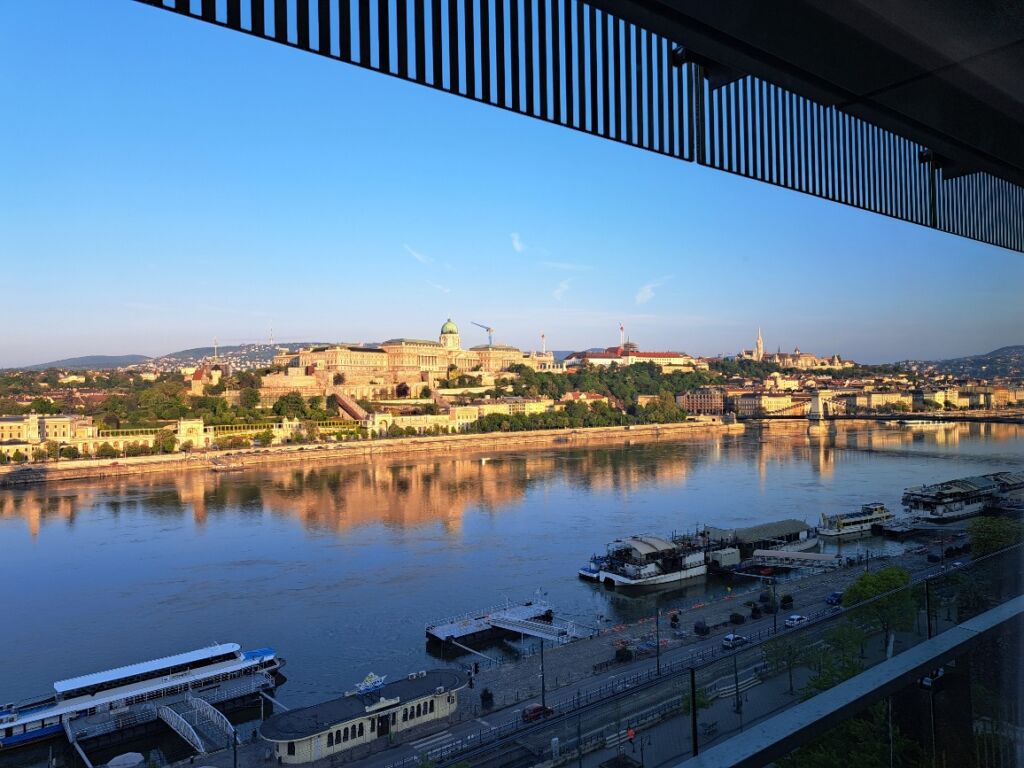
Rubbing Shoulders with Masters of Wine
As friends will know I do not have an extensive wardrobe. I have brought the lighter of the two jackets I own for the evening launch party on the rather chilly top floor Liz and Chain Bar. Speeches by the great and worthy of Hungarian wine explain how far the industry has come in the years since I was last here. The dapper host is Gergely (Greg to the linguistically challenged) with an immaculate waxed moustache and even more impressive English accent. We have a selection of wines to taste and drink, supplemented by beautiful, substantial and sophisticated canapes. It is hard not to be somewhat overawed rubbing shoulders with Masters of Wine, top Sommeliers from Shanghai and Korea, journalists, consultants and wine educators from Europe, America and around the world.

Back to School – Masterclasses
Next morning at 8:00 an expectant group meets in the foyer and is transported across the river to a beautiful new conference centre and concert hall. A perfect blend of renovation of post-industrial buildings and new modern architecture within a calm and quiet park while still in the centre of the city. After registration and introductory speeches, we are treated to a range of masterclasses on fabulous Tokaj wines, the intricacies of Hungary’s volcanic soils, new sustainable wineries etc. The only shame was that you could not sit-in on more of them! After a fine restorative buffet, it was on to taste the wines from wineries that had been setting up at the back of the hall in the morning. A range of 30 or more quality producers from across the country.
With a short break to recover out in the sunshine it was on to the neighbouring hall for further discussions and sustenance. We were treated to an interesting performance by Deva, a talented young musician playing “Techno-Hungarian Folk”! After a full and intense day, we were taken back to the hotel across the river, with just time for a small glass of Furmint before turning in for the night.
Flying Saucers!
The following morning, we are up early again to start our “Study Tours”. The sleepy crew in the foyer were split into three groups with varying routes across the country. Our bus made its way against the morning traffic out of Budapest and on to the motorway for the 3 ½ hour drive to the far east of the country (next stop Ukraine) and the famous Tokaj region.
First stop was the incredible Sauzka winery. We landed below the winery which had looked from a distance a lot like 2 flying saucers embedded in the hillside. Word has it that €25 million has been spent here to create a stunning vineyard and winery. We tasted excellent fizz and still wines in the futuristic tank and barrel room cut into the hillside. There can be few more impressive wineries anywhere in the world. The “little snack lunch” would be hard to beat… and not just on understatement!
We were then treated to tours and tastings at two more Tokaj cellars before arriving in the rain at the Gróf Degenfeld Hotel. One final tour before enjoying a wonderful dinner at which all the courses were matched with the estates white Tokaj wines. Amazingly the best match of the night was a super-rich and sweet 6 Puttonyos Aszú wine with a Venison Ragout!
The next morning, I managed to get myself up early enough to take a short walk in the rain up the hill behind the hotel to the Theresa Chapel. It has splendid views over the surrounding vineyards to the Tokaj hill. Its volcanic shape a perfect indication of the activity that has created the topography and soils of so much of northern Hungary.
Tasting on the Hoof – Eger
The walk and fine breakfast set me up for another packed day of visits and tastings. This time the target is Eger, halfway back to Budapest and the home of another famous Hungarian wine – “Bull’s Blood” (the name relates to the Ottoman siege of the town in 1552 when according to Hungarian folklore 2000 loyal soldiers saw off an Ottoman army of 40,000) more correctly called Egri Bikaver. The town is packed with historical sites which the daughter of the late revered Gál Tobor showed us around with a walking “Tasting Tour” (different wines at different sites) finishing below the famous castle.
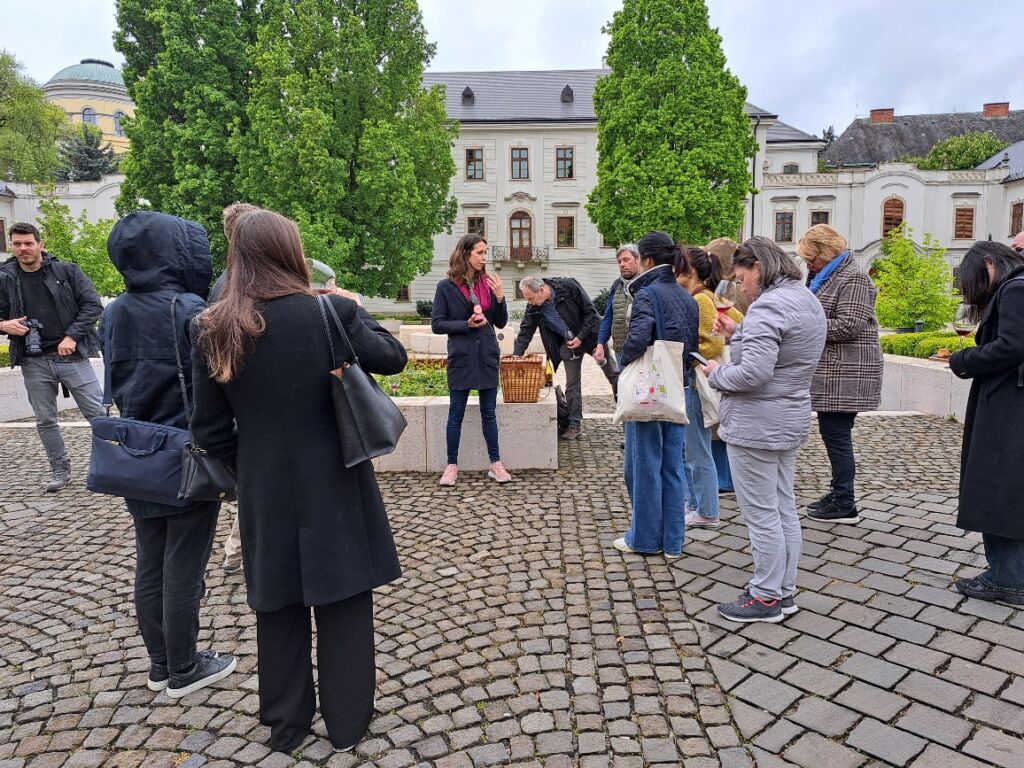
We were treated to a delicious subterranean lunch at the longest table I’ve ever seen (sure to seat 50) in one of the tunnels that leads to the Cellars. We then moved on to the fabulous San Andrea winery. The tasting and introduction were in the heart of the underground cellar, this time only excavated in the last 20 years to create the winery. Back above ground we were able to taste from some 20 producers of the region. Quality was great across the board. The wines, both red and white, are overwhelmingly blends, the reds dominated by Kékfrankos. The key words to remember were cold climate, volcanic soils and blends!
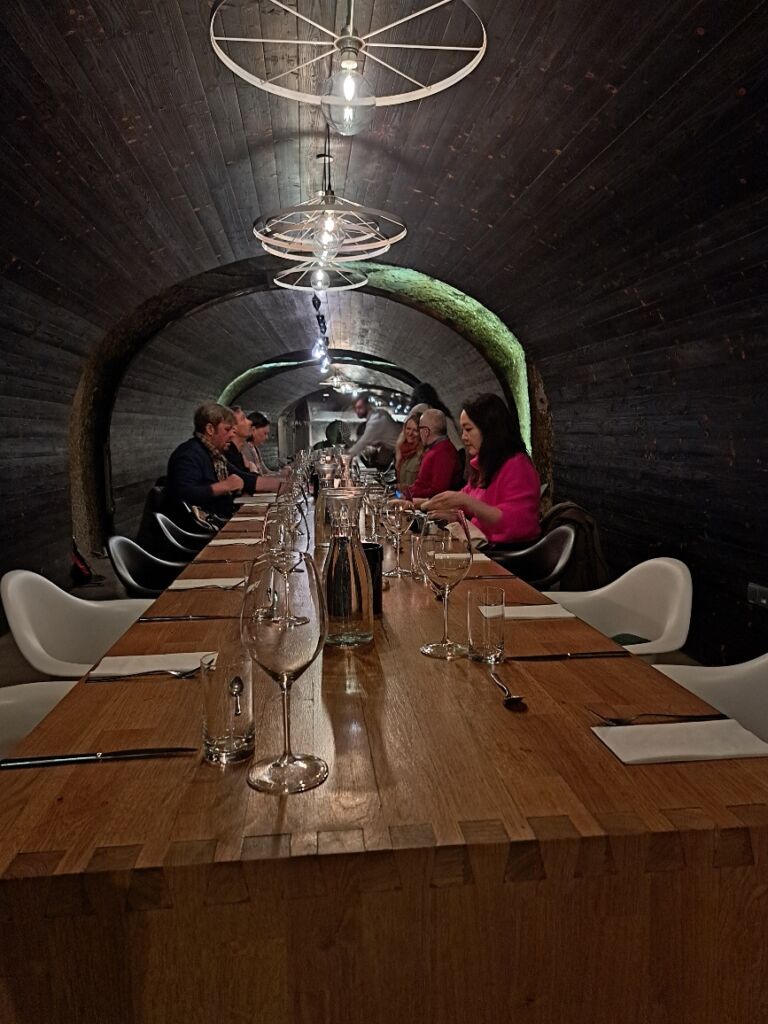
Climate Change – The end of Tokaj?
Another recurring theme across the three days had been how much climate had already changed over the last 20 years (definitely bringing Kékfrankos to new levels of ripeness). The worry will be, as in so many great wine regions of the world, where will we be heading next. A sobering comment from one top sweet Tokai Aszú producers was that it may be impossible to make these historic, unique wines within the next two decades.
It may seem that it was a was all a bit of a jolly but decisions were made and I look forward to receiving a pallet of new Hungarian wines in the next few weeks and to start spreading the word about the variety and quality of wines coming out of the country today. If you’re eager to taste join us on the 21st of June for our Hungarian wine tasting – taste 6 wines & a bowl of traditional goulash! £25 p.p. but be quick as there’s only limited spaces available.
We didn’t get back to Budapest until dusk. But enough time for a small splinter group to head across the Danube to a traditional fish restaurant. We enjoy a thick and wholesome fish soup, washed down perfectly by a red Kadarka wine. A slower amble home by the twinkling lights of the river could not have been a better finish to a fabulous educational and enjoyable trip to the heart of old Europe.
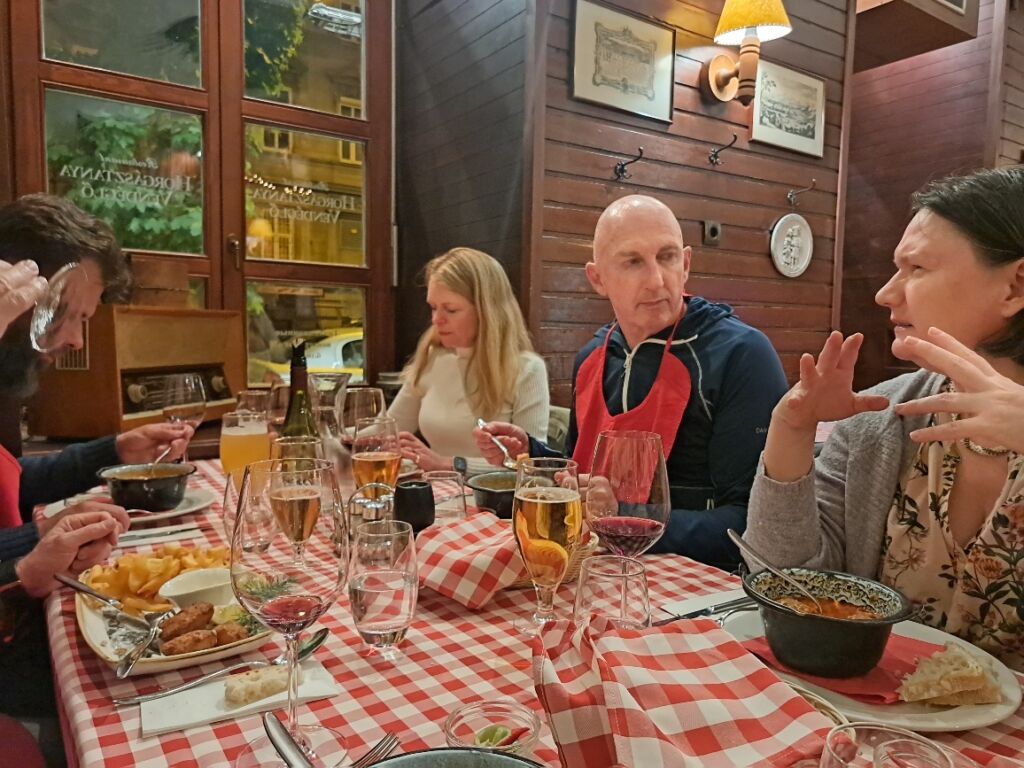
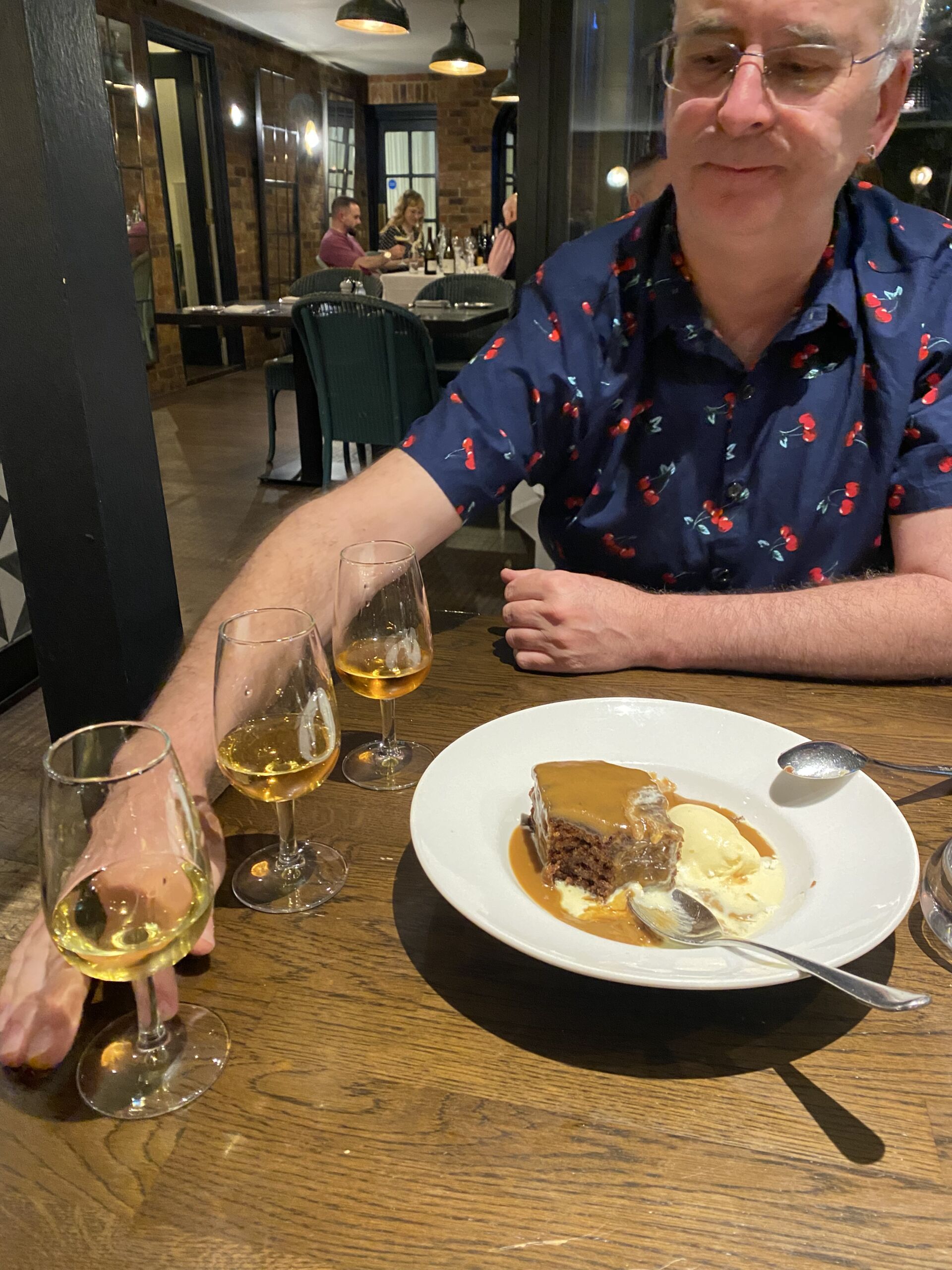
The Old Bridge Hotel
We visit old friends in London every now and again and our favourite stop on the way home is The Old Bridge Hotel. It’s a homely and comfortable hotel in Huntingdon. This is also Oliver Cromwell’s birthplace as it happens. The Old Bridge Hotel has a good restaurant and genuinely welcoming, friendly and professional staff.

Old Bridge Hotel Wine Shop
Of course there is another attraction for us! It has a good wine shop with an enomatic machine. Have some fun tasting small measures from a good selection of wines. You just put money on a card and off you go to the machine to choose a wine to taste.

Good Wine Selection
Having the shop means they have a very fair pricing policy on wine in their restaurant and an excellent choice of wines by the glass. Dylan took the opportunity to taste Newton Johnson wines from South Africa. We stock some of their lines in our shop Pinot Noir and Chardonnay as well as the Albariño. Their wines are extremely well made and are often hailed as the best Burgundy style wines outside of Burgundy.
A Good Sommelier Makes the Night
The sommelier was great fun last night and very knowledgable. We ended our meal with him testing us on 3 dessert wines! A lightly fortified Muscat, a Tokaj and a New Zealand Pinot Gris. The Greywacke Pinot Gris was a winner and we shall add that to our Greywacke wine collection in the shop.

There are some great offers, Sunday night deal is exceptional value. We paid £95 for our room and breakfast (also very good with top notch marmalade – very important!) It’s a good base to visit Cambridge.
Llinos
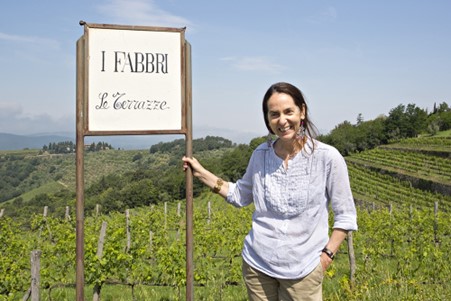
I Fabbri
Dylan’s Travels to Chianti
What a night at I Fabbri. I had to do some serious rally driving to arrive at all. It had been a long four and a half hour drive from Cantinarte in Abruzzo. The last half or particularly 20 minutes was challenging. The tarmac ran out, the mist was down and it was raining. I was aware I was going to be late having not expected the conditions or the twisting, undulating forest track.
Arriving at I Fabbri
I finally arrived at the little square where Susanna had told me to park. With no visibility I had little idea which way to go into the mist: up, down, north, south, east or west! A forester in a Land Rover emerged and offered for me to follow him. He indicated for me to turn down a narrow track and I finally arrived at the Castello di Lamole.
The Wine Maker-Importer Relationship!
Susanna was waiting and directed me into a little parking space. We hugged like old friends, but we have only met briefly maybe three times! Is it because of the product you have been selling for years that means you feel like such old companions? In the same way as when you meet old college friends and you can pick up again at the drop of a hat we chat away!

She led me up some stone steps to a beautiful compact tasting room. On another day I’m sure it would have had a spectacular view over her treasured vines.
She had left a successful career in fashion in Florence more than 20 years earlier to come and resurrect her family’s vineyard. This is a family history she can trace back 400 years. I-Fabbri (blacksmiths) maybe attests their former graft in the north of Italy but surely four centuries of lineage is enough for a family to claim roots.
Tuscany
The vineyards are some of the highest in Tuscany, really not too far from Florence, maybe 35 kilometres (which even in the day could take a heroic hour or more in a motor car on a night like tonight). But tonight, as the light outside faded, I might as well have been visiting a vineyard in the depths of Armenia or Moldova or halfway up the Catalan Pyrenees!
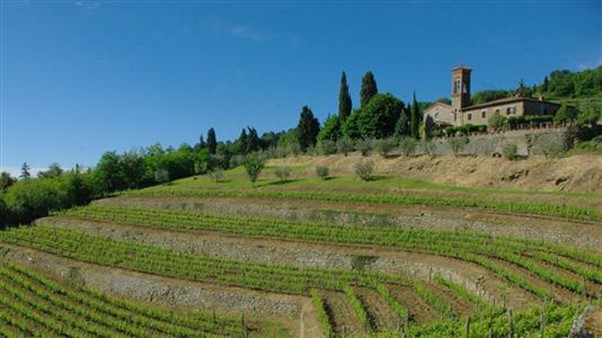
The Tasting
Two tables were set – one had glasses and three bottles of Suzanna’s labours and hard to ignore was another with two place settings bowl and dinner plates, neat napkins, more glasses. I would not starve before losing myself in the forest later!
We tasted through her different cuvees as she explained the nuances between them. The bedrock of Tuscany and Chianti is Sangiovese and make up the majority of her wines – bar one. A little proportion of Caniolo here, 20% Merlot in the Olinto giving a hint of plumper fruit and one cuvee of Merlot from vines she planted before 2000 as she re invigorated her ancient family fields and terraces of vines.
Lamole Chianti Classico
100% Sangiovese Grosso come from the highest vines up to 630 metres (most of the way up our local mountain Cader Idris as I look out from my kitchen in Dolgellau now). Aged in cement tanks for 12 months. ‘Cement’ just doesn’t sound so romantic but is the bedrock of some great wines. I find age and experience tend to cool the enthusiasm of wine makers for oak (once again awarded Tre Bicchieri in the prestigious Gambero Rosso Guide).
Terra di Lamole
This wine has the addition of 10% Canaiolo grapes from lower vineyards (down at 550 metres!) and some from her oldest vines planted around her birth in the 1960s. Here there is some use of oak a proportion spending time in 500 litre French oak barrels.
Riserva Chianti Classico
The Chianti is all made in 500 litre French Tonneau, the 2020 for around a year. This use of not new oak is about giving texture to the wine and for sure rounding the flavours.
Grand Selection Sangiovese Grosso
The Grand Selection Sangiovese Grosso is from some of the oldest vines. It is only made in the best years and is aged in 1500 litre Allier tonneaux for 24 months. This is the highest representation of what those 60-year-old vines can do.
“Il Doccio” 2018
This finished off the tasting. It is 100 % Merlot and demonstrates what restraint in the high hills of Lamole can produce. It is delicious but not overblown.
Susanna is erudite, modest and charming – her wines reflect this. They are powerful but not blockbusters where impact is impressive but whose pleasure may wane. With the wines of I Fabbri the pleasure grows. The complexity reveals itself: the fruit is there, the acidity is there, the tannins too. It is the balance that makes these wines so good.
And the Socialising!
So back to the other table. Hospitality in Italy comes hand in hand with my work that is wine but so often food makes the experience so special. I follow her down another stone staircase to the kitchen below. A simple meal is ready to throw together. We break bread together, literally – crunchy croutons to scatter into the delicious potato and pumpkin soup, drizzled with a little fine olive oil. Now we relax and conversation can spread to how much olive oil one might use in a week (one litre for a family would be normal). Politics and the state of the world however horrible seems more bearable with some simple meatballs in tomato sauce and small diced fried potatoes garnished with rosemary and of course a glass of I Fabbri in hand.
Lost Again!
Such an experience would make any job worthwhile. I have to say it is not always so, but this is a visit to stay in one’s memory for years. The time has flown and I am late to reach my accommodation. Susanna wrapped up the slice apple tart for me to take with me. She phones the hotel to say I am on my way and will be there in good time. We go back out into the dark, mist and drizzle and hug like the old friends we now are! She gives me the sort of directions that are vital to get me straight to my hotel: left at the end of the track, right when you get to the bottom of the hill and right again by the pharmacy in the village. Instructions that seem so obvious immediately, but sadly half an hour later I’m now further from my bed than when I left her! Eventually I have headed up and over some strange mountain (Chianti is hilly) and I arrive at the hotel. A light is on, a little envelope on the doorstep with my key and directions to my room. I slept so well!
Click HERE to see her wines on our website.
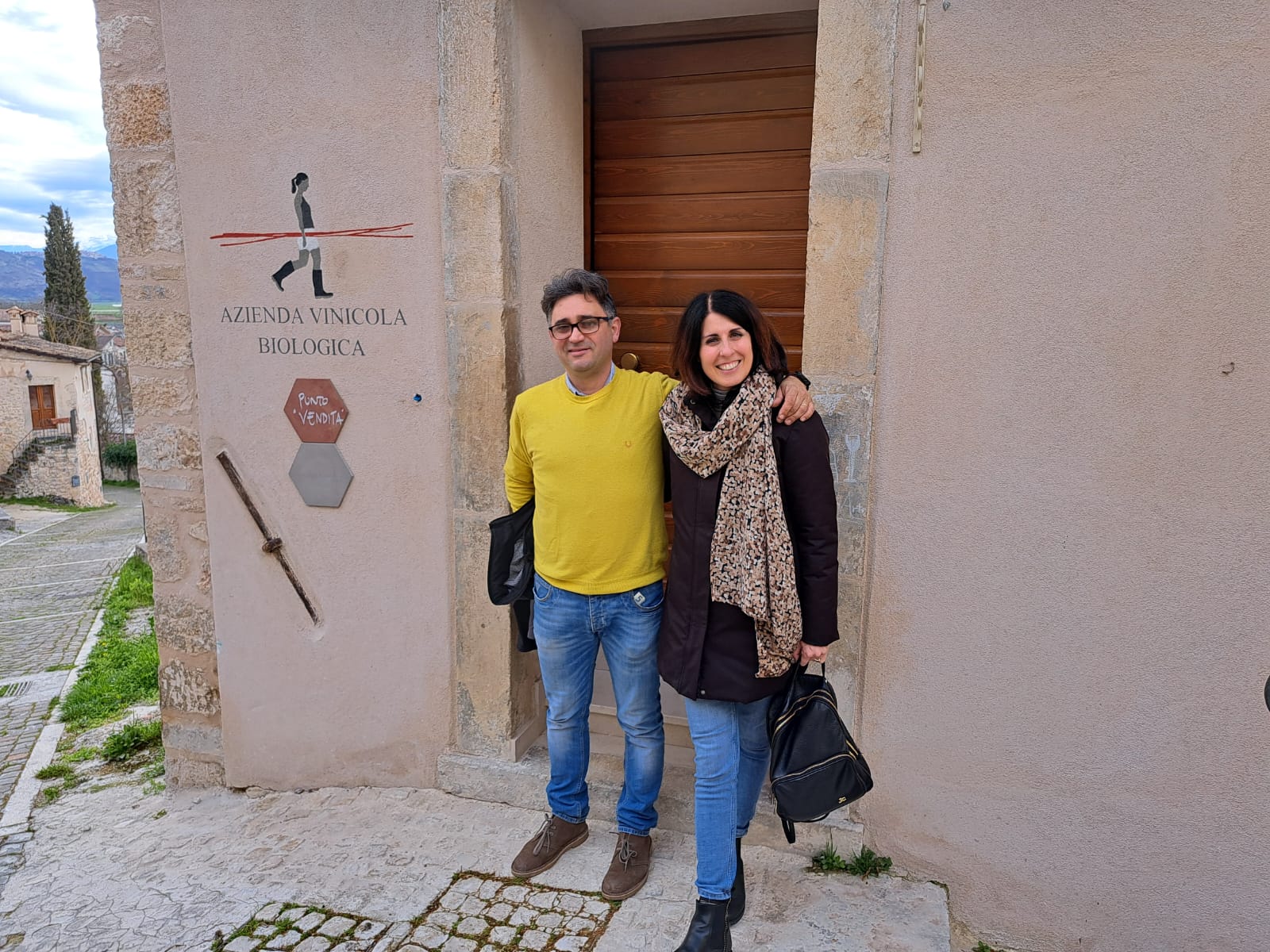
Cantinarte
I was on my way to Cantinarte – an epitome of a family run business in Abruzzo, central Italy. They are all immersed in this beautiful winery: her father checks the vines and the quality of the grapes every day and harvest is very much a family affair. They hand-pick and personally select the grapes for the very best quality in Cantinarte. We started buying from Francesca a few years ago and I am reminded why. Her respect and commitment to the land and itssustainability is unquestionable. This is farming at its best.

Finding the Vines!
Now sometimes it is just not what you expect. Oh yes, I knew I would have a wonderful warm welcome from Francesca and her husband. The tasting was already laid out for me and of course there was food afterwards – a simple and delicious soup of beans and vegetables typical for the area. Cheese and salami followed – the salami a particular speciality of the South of Abruzzo. But where were the vineyards?
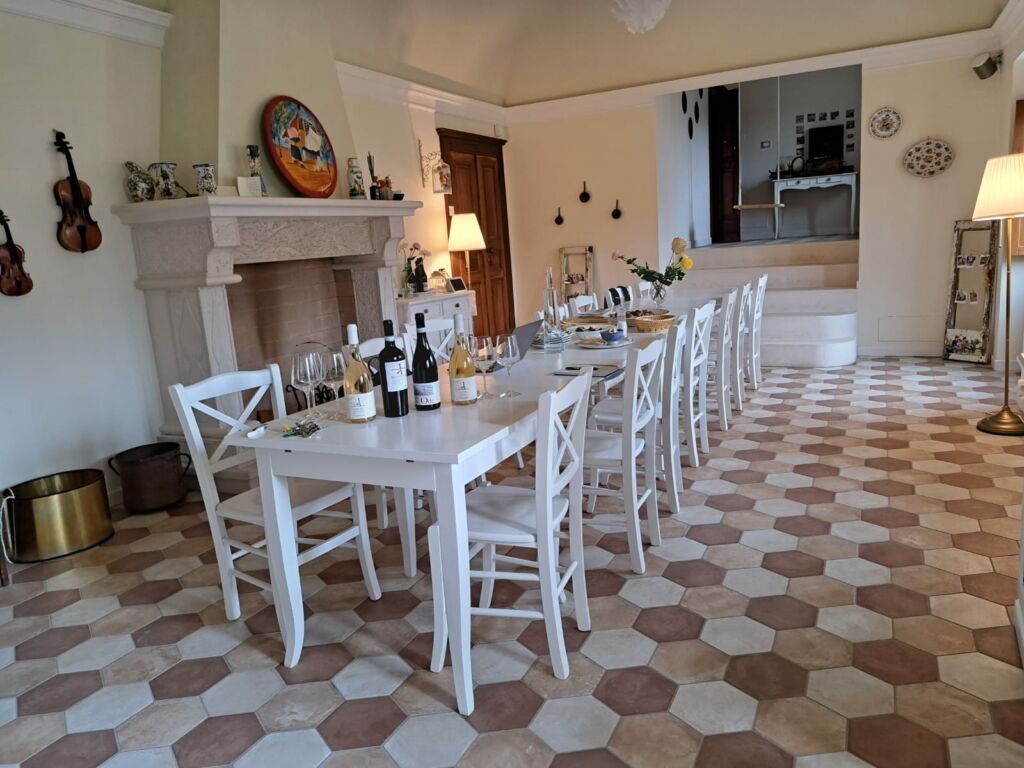
A Beautiful Landscape
Having driven through the mountains to Navelli, the small village clinging to the hillside, I had not yet seen a single vine. Where do they make their white wine? All was revealed as we drove across a muddy field to see the two-hectare vineyard hidden behind the village. Strong protective fences have been erected to keep out the wild pigs and deer! Immaculately trained, at this high altitude they produce wonderful white wines from pecorino and pinot gris grapes.
Worth the Trip
The Reds that are so good come from lower down the valley around the hilltop Roman city of Chieti and are powerful expressions of those typical Montepulciano grapes. Don’t take my word for it, as soon as I returned, we put them in the pods for you to taste! They will be there for another week or so, or click here to see our present online selection.
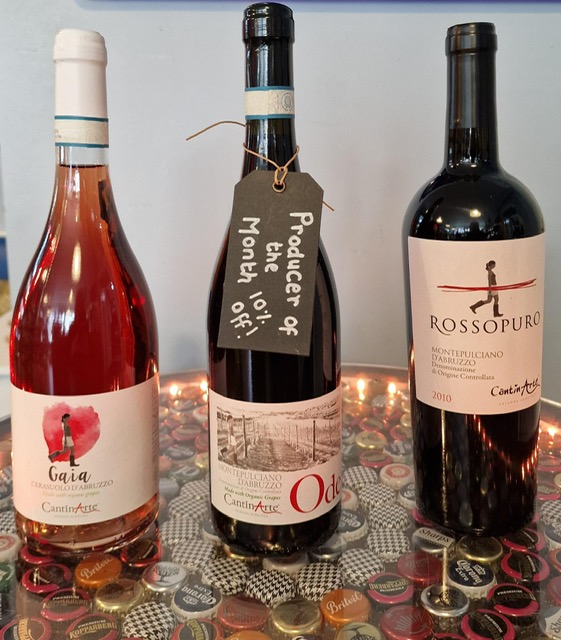
Take a Break in Italy!
You can also go and stay in this very beautiful area, Francesca not only produces her own organic wine, but also olive oil. You can also organise food activities! I would highly recommend it with a visit to Cantinarte’s historic olive oil museum.

Understanding Rioja
Rioja (pronounced “ree” + “OH” + “kuh”) as we know it is a red wine, made using the Tempranillo grape. Graciano, Mazuelo and Maturana Tinto are also grown in small quantities as blending companions.
What will you taste?
You can expect a Rioja red blend to have complex flavours, earth and leather layered with dark fruit, tobacco, and plum.
A white Rioja has flavours of toffee, raisins, dry fruit and good acidity balanced with great freshness.
A White Rioja you ask?
There is also white Rioja, this is usually made from the grape Viura (this too is almost always made using blending companions). The Izadi white that we sell consists of Viura, Garnacha Blanca, Maturana, Tempranillo Blanco and Malvasia y Torrontes.
Where to find Rioja
Rioja gets its name from its location ‘La Rioja’ which is in North Eastern Spain, it also extends to the neighbouring Basque Country, Navarra and Castilla Y Leon.
Rioja stretches for about 100km along the banks of the river Ebro. It is sheltered from the Atlantic by the mountain range Sierra Cantabria and is sheltered from the Mediterranean by the mountain ranges Sierra de la Demanda and de Cameros. This allows the cool Atlantic and/or warm Mediterranean winds to influence the growing conditions.
There are 3 sub regions of Rioja which have an inevitable effect on the wine/Grape. West to East.
| Region | Soil Type | |
| Rioja Alta | Atlantic influence | Clay Limestone Alluvial |
| Rioja Alavesa | Atlantic influence | Clay Limestone |
| Rioja Oriental (recently changed its name from Rioja Baja) | Warmest region Mediterranean influence | Iron rich Clay red soils Cobblestones |

When to drink Rioja, understanding the Classifications
Rioja has a classification board called the Consejo Regulador DOCa Rioja, who inspects the quality of producers to ensure consistency. There are 4 different main styles of Rioja wine.
Generic – No ageing requirements
Crianza – Aged for 2 years. 1+ in barrels.
Reserva – Aged for 3 years (1 year in barrels and 6 months in bottles)
Gran Reserva – Aged for 5 years (2 years in barrels and 2 years in bottles)
Pairing
Rioja traditionally pairs well with ham, fish – tuna/hake, artichokes, asparagus, cheese etc..
So why not join us on the 22nd of March and see how well it pairs with Lamb!!
Ceri 🙂
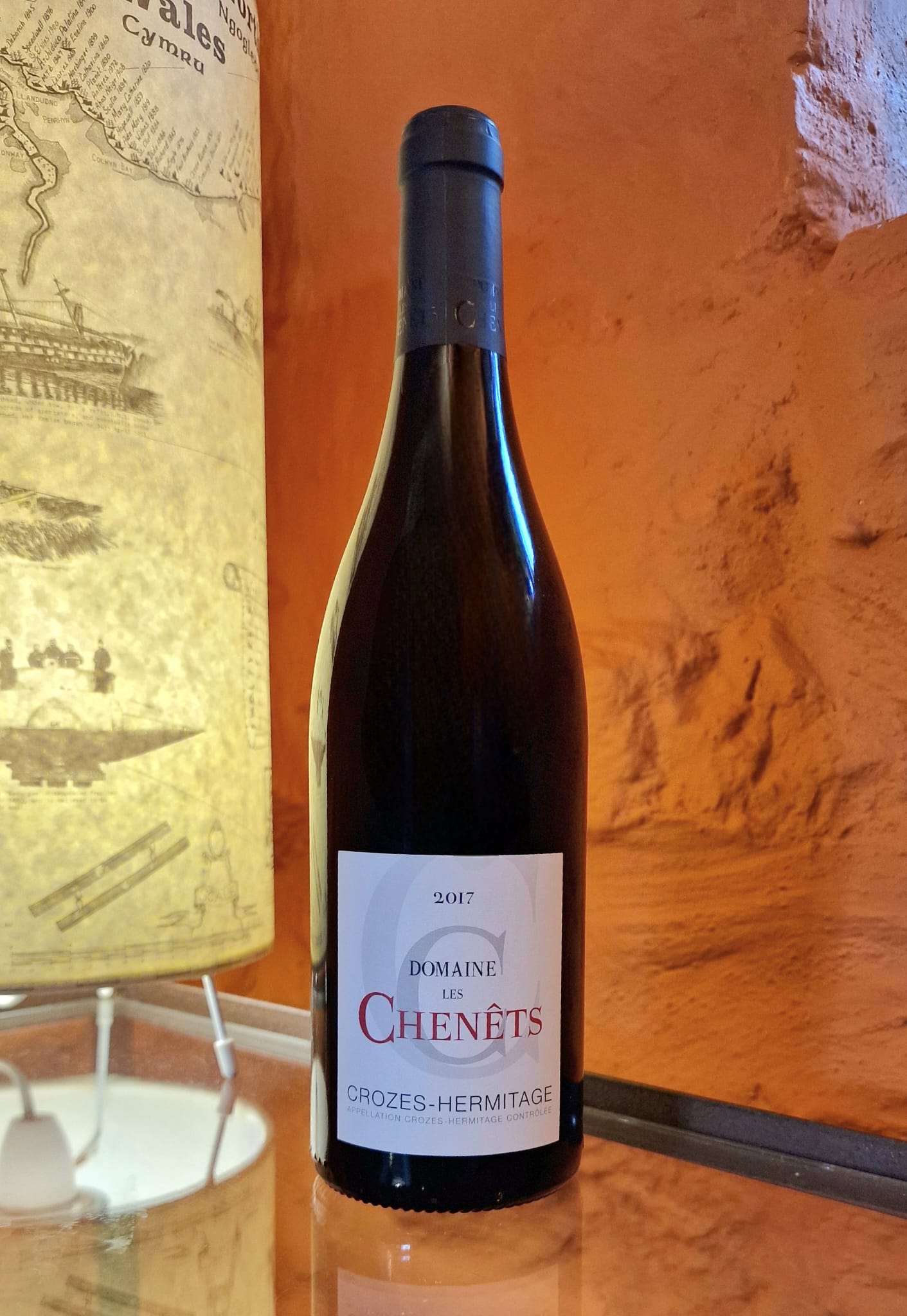
Crozes-Hermitage
Producer of the Month – Domaine les Chenêts Crozes-Hermitage
The vagaries of weather had made Madame a bit distracted the last time we visited Domaine les Chenêts a few years ago. They had had some heavy rains and hail which had destroyed a proportion of the crop. By now, the weather had swung to the opposite extreme and the Northern Rhone was subject to blistering hot weather. This meant she wouldn’t do a tasting so we had to bring a couple of bottles home to sample. They have now converted their some 13 hectares of vines to organic farming I’m pleased to say.
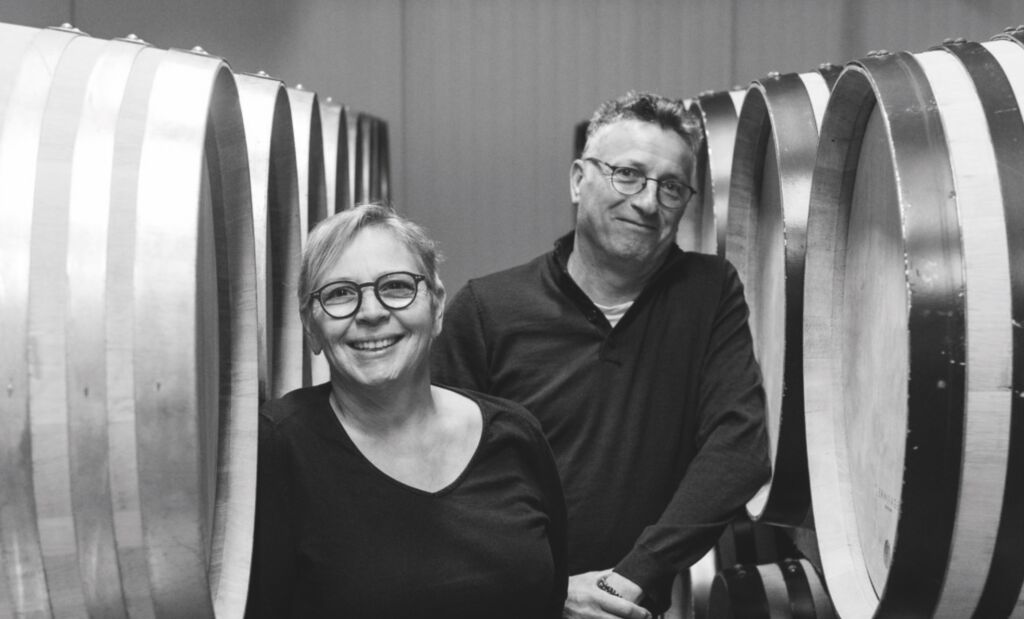
Good Value Rhone Wine
Hermitage stands as a beacon of wine excellence. This renowned wine region, often overshadowed by its more famous neighbour, Hermitage, boasts a rich history dating back centuries. With its diverse terroir and dedication to producing exceptional Syrah wines, Crozes-Hermitage has emerged as a hidden gem for wine enthusiasts seeking quality and authenticity.
Syrah
The vineyards of Crozes-Hermitage stretch across rolling hillsides, basking in the Mediterranean climate that graces the Rhône Valley. The region’s soils vary from granite in the north to alluvial terraces in the south, providing a unique canvas for winemakers to craft expressive wines with distinctive characteristics. Syrah reigns supreme here, producing red wines that exhibit a harmonious balance of fruit, spice, and earthy notes, while Marsanne and Roussanne grapes contribute to the production of elegant white wines.
Explore Crozes-Hermitage
If you can, exploring Crozes-Hermitage is a delight. The charming villages dot the landscape and are full of family-owned wineries. Some preserving age-old traditions, other innovative producers pushing the boundaries of winemaking.
Special Offers
This March 2024, we are featuring Domaine les Chenêts as our producer of the month. This weekend to kick it off you can taste it along with other Syrah/Shiraz to compare and it is also available in the pod by the glass. Make the most of the special discount of 10% off the Crozes Hermitage if you buy this month.

Why Not Welsh Wine?
To celebrate St. David’s Day why not open a bottle of fizz to celebrate? Maybe even a Welsh fizz? 10 years ago, we wouldn’t have even thought of this but in the past decade we’ve seen a rapid development in the wine scene here in Wales, both in quality and in drinkability. We are seeing more and more Welsh vineyards producing extremely good wine. Many are winning awards e.g. White Castle Vineyard in Monmouthshire and Conwy vineyards.
What grapes are used?
To battle the harsh and unpredictable climate in Wales, some selected species of grapes must be selected to withstand fungal disease, rot and frost. Solaris is a common grape used all over Wales due to its resilience. It produces aromatic wines with hints of gooseberry, elderflower and citrus fruits that are complemented by good acidity and freshness. Those of you who like a good French Sauvignon Blanc would love this zingy and fresh grape variety.

We are always on the lookout and researching new and interesting Welsh wines and are sampling new local vineyards even as close as Pwllheli! More natural and experimental wines are also being produced in the south of Wales, with use of barrel ageing and fermentation processes using ambient yeasts. Velfrey Vineyard in Pembrokshire produce a wine named, simply, ‘Naturiol’ made with Seyval Blanc grapes “naturally fermented meaning no added yeast or sugar, half in stainless steel and half in old oak barrels that were previously used for white Bordeaux which lends the gentle smoky flavour.” [1] Only 7% in alcohol, this wine is super zesty and interesting and perfect for those in search for low alcohol alternatives but with plenty of oomph.
[1] Velfrey Wines, Velfrey Vineyard, Naturiol, Seyval Blanc
Welsh Sparkling Wine
A good array of traditional method (Champagne method) sparkling wines are also being produced. Montgomery Vineyard sparkling wines are among a very popular selection, ranging from crisp and dry to sweet and fruity. The Seyval Blanc is a particular favourite, expressing aromas of pear drops, crisp green apples and a floral touch. See for yourself and taste this exciting wine from the comfort of your own home with a virtual tasting hosted by Llinos and Dylan on the 1st of March. For more information follow the link: Montgomery Virtual Tasting
Osian
